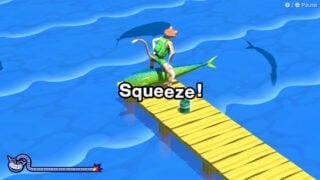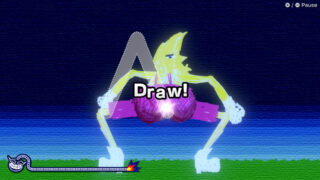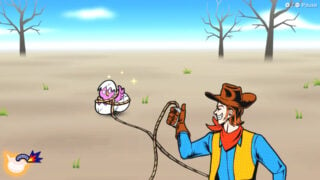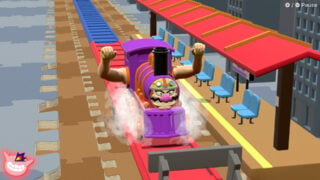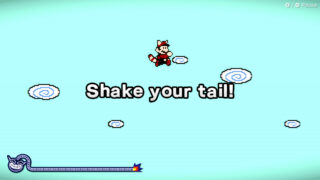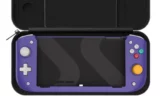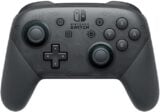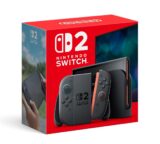Review: WarioWare: Move It is great fun… when it works
Wario’s latest will have players going ‘waaah’ with its motion controls
- Chief director
- Goro Abe
- Key Credits
- Waki Shigeta (Director), Hiroki Kawamae (Art director)

WarioWare games tend to live or die by their gimmicks.
Every new entry in the series has some sort of distinctive game mechanic to differentiate it from the others – when that mechanic works well, wonderful things happen.
Whether it’s the creation of the microgame concept in the first place in Game Boy Advance original, the use of the DS’s touch screen in WarioWare: Touched or the ability to create and share your own games in WarioWare DIY, a strong gimmick has invariably led to a strong experience.
Occasionally, however, the series misses the mark. DSiWare Shop game WarioWare: Snapped made use of the handheld’s low-res camera and was a bit of a mess as a result, while we called Switch title WarioWare: Get it Together “hit and miss” due to its character platforming mechanic.
With the eleventh instalment, WarioWare: Move It, Nintendo has revived a past gimmick that previously featured in the series – motion control. This has already been done in a couple of WarioWare games – Twisted and Smooth Moves on the GBA and Wii respectively – and worked well enough in those instances. This time, not so much.
As is WarioWare custom, the aim of the game is to complete a steady stream of microgames, each lasting only a few seconds, delivered to you at pace. In order to succeed, players have to quickly determine what’s going on, figure out what the controls are and execute the task in the short window available to them.
Move It, like the Wii’s Smooth Moves before it, adds an extra step to proceedings – just before each microgame starts you’re told how to hold your Joy-Con controllers, meaning you have to quickly get into position so the motion controls are accurate.
There are 18 different stances the game can potentially pull from, ranging from straightforward ones (stand upright with the Joy-Cons at your side) to more elaborate set-ups (hold your dominant hand at your nose and your other hand at your rear end as if you’re pretending to be a chicken).
The game eases you into these, making for a fairly slow start to a game known for its fast pace. Each time you encounter a stance for the first time the action stops and an unskippable explanation video goes on a little longer than you’d like, showing you the stance then telling you some sort of quirky quip.
As in previous WarioWare games, the microgames are split into separate stages, each hosted by a different character. Most of these stages comprise microgames that only use two or three of the game’s stances, meaning you’re at least partially prepared for what’s to come next. Once you get through these stages and unlock the modes that incorporate every microgame, though, it’s a free-for-all and all 18 stances can crop up at any time.
The overriding problem with all of this is that some stances appear to be more responsive than others. The squat stance, in which you squat down and place the Joy-Cons on your knees, didn’t seem to register our movements properly in some games, for example.
Worst of the bunch, however, is the ‘Hand Model’ stance, which requires you to drop the left Joy-Con and point the right one at your hand, using its built-in IR camera. This is barely used in other Switch games and is iffy at the best of times, but in a situation where you only have a few seconds to get it to recognise what it’s looking at – let alone how easy it is to hold the camera upside-down when you’re in a rush – had us failing its microgames with irritating regularity.
The thing is, for all the doohickeys and whizz-bangs contained within the Joy-Con controllers, this worked a lot better with the humble Wii Remote. Almost every game in WarioWare: Smooth Moves used a single Wii Remote, which was chunky and comfortable to hold, and had accelerometer-based motion sensing that was limited enough to ensure the games never asked too much of you.
“The thing is, for all the doohickeys and whizz-bangs contained within the Joy-Con controllers, this worked a lot better with the humble Wii Remote.”
This time you have to use two Joy-Cons, which can be small and uncomfortable to hold for players with larger hands, and include sensitive gyroscope tracking that wasn’t in the original Wii Remote, plus that IR camera, plus a host of extra buttons. The result is a set-up that’s too clever for its own good – a true WarioWare of all trades and master of none.
To be clear, when it works it’s as entertaining as ever. The 223 microgames in the main Story mode easily maintain the absurdist humour the series has always been known for, whether you’re trying to pull stockings off someone’s face (don’t ask) or making two massive giants wiggle their hips so a tiny man can swing around a rope attached to their waistlines.
There are plenty of laughs to be had here. It’s just that there’s always an “oh, come on” (or something rather more colourful) waiting around the corner for the next time you’ll swear you did it right and the game decides otherwise.
This isn’t even always a problem in some situations. Just Dance is a prime example of a game that revolves around motion controls but has never managed to use them to accurately track a player’s movements. Pop it on during a party, though, and the players won’t care, because the game never fails them and they’ll be having fun dancing anyway.
WarioWare: Move It is the complete opposite: it’s a game that requires you to nail its controls within just a few seconds, and fails you if you don’t manage it. Those controls need to be watertight – like they were on the GBA, like they were on the DS, like they even were most of the time on Wii – and they just aren’t here.
“It’s a game that requires you to nail its controls within just a few seconds, and fails you if you don’t manage it. Those controls need to be watertight – like they were on the GBA, like they were on the DS, like they even were most of the time on Wii – and they just aren’t here.”
It should also be pointed out that accessibility is a non-starter here, with very few concessions for those unable to play in the way requested. While Nintendo’s Ring Fit Adventure gave players the option to avoid certain motions (such as running on the spot) if their personal circumstances made this difficult or impossible, Move It is only happy if you’re able to ‘move it’ under its terms.
If you can’t squat, you’ll fail the squat stance. If you don’t have five fingers on your left hand, you’ll fail some of the IR camera games. If you don’t have the ability to hold two Joy-Cons, you essentially can’t play the game in single-player (the 2-4 player Party Mode allows play with a single Joy-Con).
Non-disabled players still need to make sure they have the right equipment too. Naturally, because of its Joy-Con requirement, playing on a Switch Lite is a no-go unless you have extra Joy-Cons spare (and even then, you’ll need to stand back from it to perform the motions, making it too hard to see).
And if you chucked those Joy-Con wrist straps away in a cupboard, or even in the bin, because you didn’t think you’d ever need to use them, you might struggle here – some microgames require you to drop a Joy-Con mid-game and let it dangle from its strap.
This review mainly addresses the game’s negative points because they’re so atypical of what the WarioWare experience is supposed to be. But there’s still an enjoyable time to be had here, and the majority of the microgames are completely fine to play with no issues whatsoever.
It’s just that when a game by its very nature only gives you a few seconds to get it right, you’re rarely given time to correct yourself. And if those few seconds involve playing a game with motion controls, and those motion controls don’t work perfectly the first time every time, issues will occur. And, given how regularly the game chucks these few-second bursts at you, the law of averages dictates you’ll get at least a handful of issues during each play session.
That awful DSiWare camera spin-off aside, there has never been a truly bad WarioWare game – only brilliant ones and half-decent ones. WarioWare: Move It falls firmly in the latter category, providing plenty of laughs but also more than its fair share of frustrated grunts of injustice.
WarioWare games require precise controls to ensure their microgames can be navigated without frustration. Move It's motion controls introduce inaccuracies that are frequent enough to dampen the experience, turning what should be a brilliant game into merely a good one.
- That brilliant absurdist WarioWare humour is still there
- A wealth of unlockables, as ever
- When it works, its fast-paced gameplay remains fun
- Controls are too temperamental for a game like this
- No accessibility options for those unable to perform the motions
